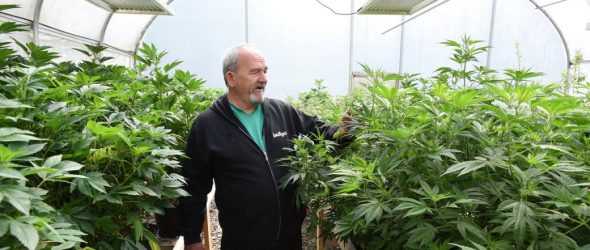Hemp farmers, lobbyists and politicians alike are shifting their focus headed into the 2020 grow season from the field to the capitol.
Despite a glut in the 2019 CBD market that has left many farmers saddled with their 2019 crop, shady processors and a meager THC (Tetrahydrocannabinol) threshold of .3% that led to the destruction of thousands of acres hot-hemp (hemp considered to be marijuana for going over the threshold), the major obstacles in the way of the hemp industry are the Food and Drug Administration and the United States Department of Agriculture.
To be sure, small steps have been made by both entities in recent months in regard to recognizing that it’s a “fools errand,” to keep the public from seeking CBD products, according to the FDA.
Even with acknowledging the public’s interest in the burgeoning hemp industry, progress has been slow and with the USDA’s final rule on hemp set to be made in the fall.
To help bring about a positive end, a very vocal hemp electorate is forming nationally and will not be denied, said Paul Glover, owner of Hawesville-based Mile Marker 5 CBD.
Glover, along with hemp farmers nationwide, are pushing their local elected officials to sign resolutions supporting the “1% Solution,” a movement geared toward raising the current THC threshold from .30% to 1%.
“The 1% Solution is necessary for farmers to succeed in the hemp industry,” Glover said. “In large part, it will ensure that we don’t have to work so diligently only to grow a weak crop with a low CBD yield. A higher THC threshold would allow us to grow a more competitive crop and make it more efficient for processors to process a better product. If it is easier and more economical for the processor, it will in turn give the farmer a heftier margin on their product.”
The 1% initiative has been gaining steam since the USDA’s release of its interim final rule on Oct. 31, 2019, that provided a tentative framework regarding the establishment of the domestic hemp program.
The interim final rule, while not the set in stone final rule, provided a speculative regulatory framework for monitoring hemp cultivation and production stemming from the 2018 Farm Bill that legalized the crop federally.
The rule applies to hemp producers and outlines how the USDA will approve hemp production developed by states under federally approved plans. The interim final rule laid out regulations surrounding testing requirements, interstate transport, state production laws and regulations surrounding the delta-9 THC threshold.
At the time, the rule enraged farmers, especially because its interim blueprint was so restrictive, forcing many states to extend the rules of their respective pilot programs for a second year as a move to maintain stability in the industry.
One of the major aspects of the hotly contested rule was that it sought to lessen the THC threshold even further, which could run the potential of ending the industry before it even has a chance to flourish. Especially in the face of competing against marijuana and cannabis friendly states such as Colorado and California, said Tate Hall, Kentucky Hemp Industries Association president.
“If they were to increase the THC threshold, we could really begin to focus on genetics, which would vastly improve our overall CBD production,” he said. “The ability to expand our research capability on the ground and test different varieties in different climate zones would be huge for the industry and the increase would protect our farmers who will likely test over the current .30% THC threshold given the varying testing results that have come out of private laboratories versus state tests. Upping the threshold up to 1% is a minute shift; there are some that would say that is marijuana; it isn’t. It would be a small change to the law that would provide a vast leeway to farmers that continue to battle that total THC equation. It would be a blessing that would allow us in Kentucky to compete with other states and an overall blessing for the future of the industry in the long run.”
While the 1% movement is gaining momentum and is especially important to those that are still fighting the good fight in 2020 and those that opted out after the rigors of the 2019 season, the change in the current threshold would quite literally take an act of Congress, said Sean Southard, Kentucky Department of Agriculture communications director.
“The Kentucky Department of Agriculture remains open to an increase of the THC limit to 1%,” he said. “However, it is important to realize that limit is part of the federal definition set by the United States Congress and as such, any change would require a change in federal law.”
That is a well known fact among the growing number of hemp farmers who are focusing on the policy and policy impact on the future of the industry — hence why those pushing the “1% Solution” will be lobbying their respective county government officials to show solidarity with the farmer leading into election season as an avenue to remind politicians on the state, and federal level that hemp is not only wanted, but necessary, said Glover.
“We want to get every county in the state to pass a resolution showing solidarity that will go up the hill to Mitch McConnell’s desk,” he said. “This will allow McConnell to highlight that county politicians, hemp farmers and farmers in general are behind this industry in Kentucky. It needs to start at the county level to show that we all see the future of this crop and its limitless benefits. This is a nationwide initiative that will show politicians in Congress that hemp farmers have become a viable electorate that is only growing.”


